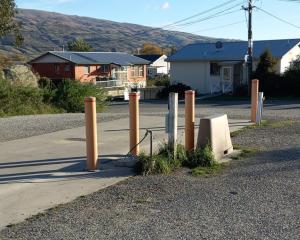
In its annual summary released today, NIWA said 2018 was 0.8C above normal, equalling 1998, but falling behind our warmest year in 2016.
NIWA principal scientist Chris Brandolino said 2018 was part of a larger trend, with four of our past six years in the top five warmest years on record.
Key stats included:
• 2018 was the second equal hottest year on record, 0.8C above average, equalling 1998 but behind 2016.
• January was New Zealand's warmest month - ever, at 3.1C above average.
• Three ex-tropical cyclones struck New Zealand in 2018: Fehi, Gita and Hola.
• The highest recorded temperature was 38.7C in Alexandra on January 30. The lowest was -10.4C at Mt Cook on June 3.
• The wettest part of the country was Milford Sound, recording 6818mm. The driest was Clyde with 526mm of rain.
Brandolino said January was the warmest month of any year on record, at 3.1C above average.
Many parts of the country recorded their warmest year on record, including, Kerikeri, Te Kuiti, Hastings, Levin, Wellington at Kelburn and Southwest Cape.
Brandolino said there were three main drivers of the warm temperatures.
The first was ocean temperatures, with New Zealand experiencing a "marine heat wave" in the first few months of the year. Some parts of the sea recorded temperatures 2C above average.
"New Zealand is an island nation, so where ocean temperatures go, they also go on land."
New Zealand also experienced much subtropical airflow in 2018, with many lows to the west and highs to the east driving northeast winds.
The increase in greenhouse gases, surpassing 400 parts per million, was the third factor, providing a "longterm tailwind to temperatures".
Along with the heat there were also several extreme weather events.
In a typical year one ex-tropical cyclone would come within 150km of New Zealand. In 2018, three ex-tropical cyclones impacted New Zealand in Fehi, Gita and Hola.
Gita, which struck over February 20-21, brought significant rainfall, leading to slips and road washouts.
For minimum temperatures, 2018 was the warmest on record at +0.94˚C above average in New Zealand.
Research has shown that historical warming rates have been larger for overnight minimum temperatures compared with daytime maximum temperatures.
In southeast Kaikoura there was 202mm in 30 hours, nearly four times the monthly normal and 28 per cent of its annual rainfall.
The major event for Auckland occurred over April 10-11, with extreme winds causing major power outages across the region. The strongest gust in the city was 146km/h at the Sky Tower.













